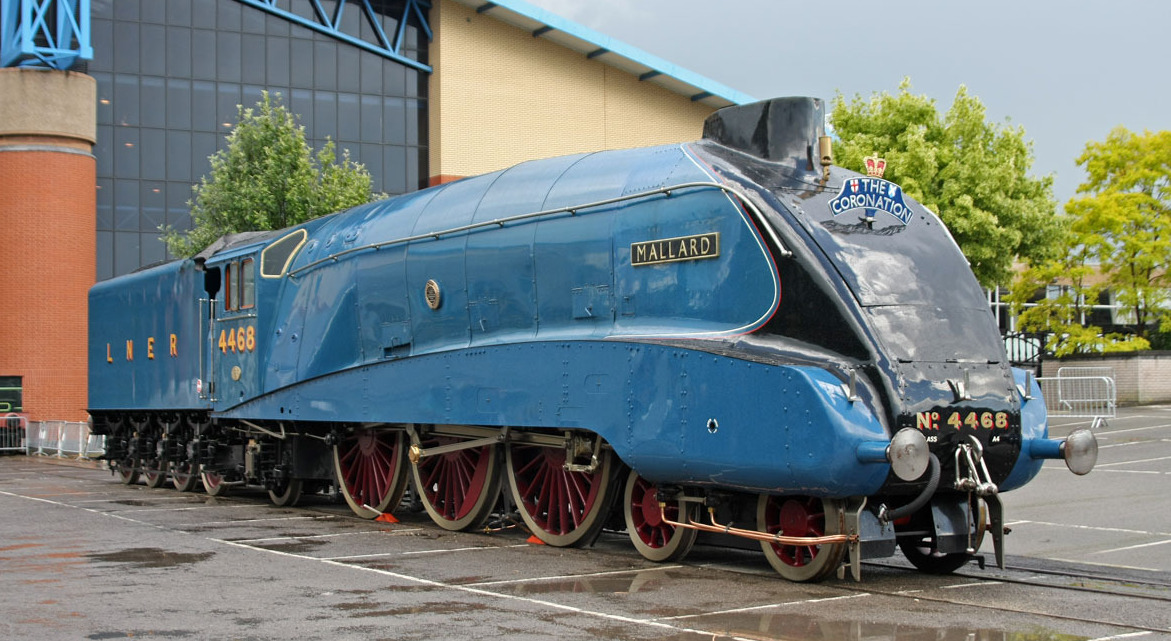Your cart is currently empty!
Sir Nigel Gresley
Sustaining the legacy

Class A4
The London and North Eastern Railway class A4 is a class of streamlined 4-6-2 steam locomotives designed by Nigel Gresley in 1935.
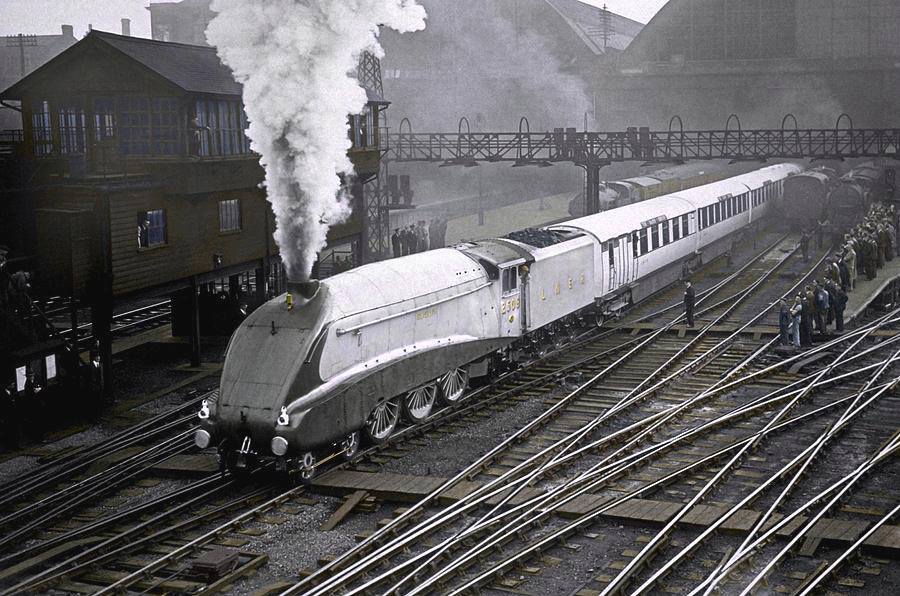
The class A4 is a class of streamlined 4-6-2 steam locomotives designed by Nigel Gresley for the London and North Eastern Railway in 1935. One of the class, No. 4468 Mallard, holds the record as the world’s fastest steam locomotive. Thirty-five of the class were built to haul express passenger trains on the East Coast Main Line route from London Kings Cross to Edinburgh. They remained in service on the East Coast Main Line until the early 1960s when they were replaced by Deltic diesel locomotives. Several A4s saw out their remaining days until 1966 in Scotland, particularly on the Aberdeen – Glasgow express trains, for which they were used to improve the timing from 3.5 to 3 hours.
Gresley introduced the class A4 locomotives in 1935 to haul the streamlined ‘Silver Jubilee’ train between London King’s Cross and Newcastle. The service was named in celebration of the 25th year of King George V’s reign. During a visit to Germany in 1933, Gresley had been inspired by high-speed streamlined Flying Hamburger diesel trains. The LNER had considered purchasing similar trains for use from London to Newcastle but the diesel units of the time did not have sufficient passenger carrying capacity and the capital investment in the new technology was prohibitive.


Gresley was sure that steam could do equally well with a decent fare-paying load behind the locomotive. Following trials in 1935 in which one of his class A3 Pacifics, No. 2750 Papyrus, recorded a new maximum of 108 mph and completed the journey in under four hours, Gresley was authorised to produce a streamlined development of the class A3. Initially four locomotives were built and the first No. 2509 Silver Link, during a press run to publicise the service, twice achieved a speed of 112.5 mph, breaking the British speed record and sustained an average of 100 mph, over a distance of 43 miles.
Following the commercial success of ‘The Silver Jubilee’ train, other streamlined services were introduced: ‘The Coronation’ (London-Edinburgh, July 1937) and ‘The West Riding Limited (Bradford & Leeds-London & return, November 1937) for which more class A4s were built.
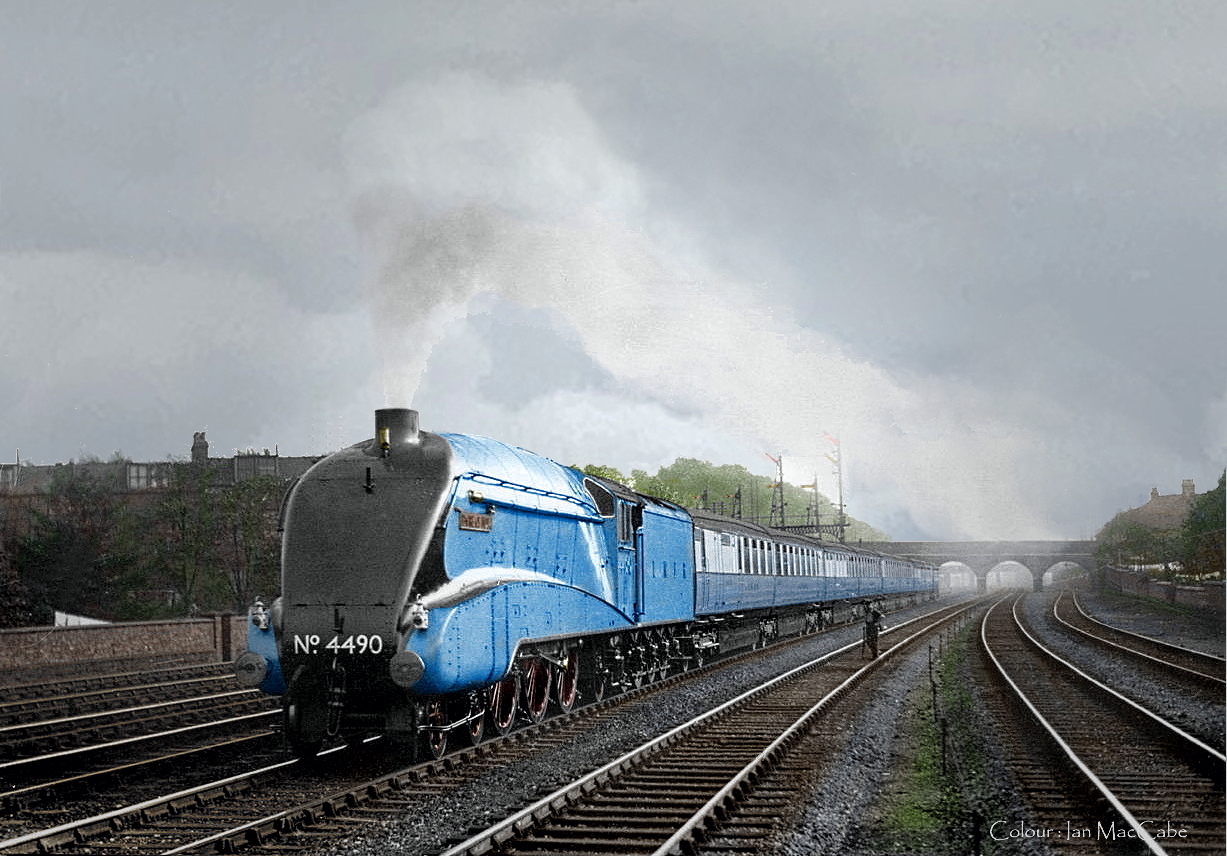

The class A4 Pacifics were designed for high-speed passenger services. The application of internal streamlining to the steam circuit, higher boiler pressure and the extension of the firebox to form a combustion chamber all contributed to a more efficient locomotive than the class A3; consumption of coal and water were reduced. A further design improvement was fitting a Kylchap double-chimney, first on No. 4468 Mallard in March 1938. The double-chimney improved the capability of the locomotives further, and the last three locomotives of the class were fitted with the Kylchap exhaust from new and the rest of the class acquired it in the late 1950s.
The class was noted for its streamlined design, which not only improved its aerodynamics, increasing its speed capabilities, but also created an updraught to lift smoke away from the driver’s line of vision. The class A4 locomotives were known by trainspotters as “streaks”. The valances were removed during the Second World War to improve access to the valve gear for maintenance and were not replaced. This apart, the class A4 was one of few streamlined steam locomotive designs in the world to retain its casing throughout its existence.

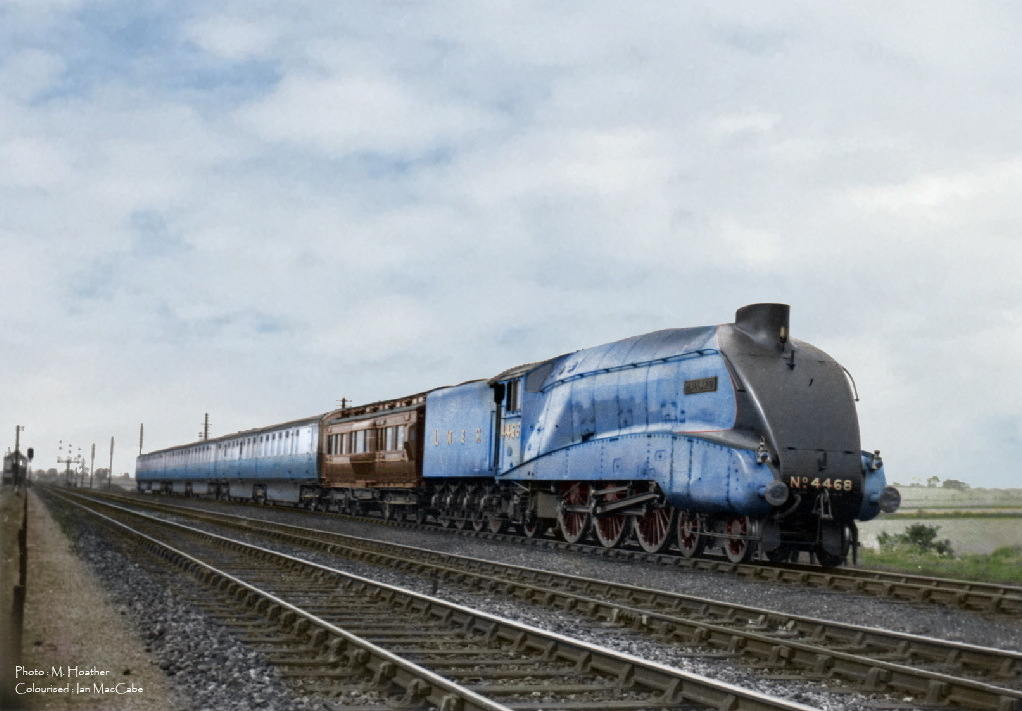
On 3rd July 1938, No. 4468 Mallard pulling six coaches and a dynamometer car, set a world speed record of 126 mph, in the capable hands of driver Joe Duddington, fireman T. Bray, and inspector J. Jenkins. In August 1936, ‘The Silver Jubilee’ train on the descent of Stoke Bank headed by No. 2512 Silver Fox driven by George Henry Haygreen achieved a maximum of 113 mph, then the highest speed attained in Britain with an ordinary passenger train. The fastest recorded post-war speed with British steam was also recorded by a class A4 on 23rd May 1959 when No. 60007 Sir Nigel Gresley achieved 112 mph when hauling 400 tons down Stoke Bank with driver Bill Hoole.
Although newer Pacifics had been introduced since the war and the streamlined trains were never reinstated, the class A4s continued on Top Link duties, notably on the London to Edinburgh services. The application of double Kylchap chimneys to the entire class was due to the persistence of Peter Townend, the Assistant Motive Power Superintendent at London King’s Cross from 1956. It was found that the economy obtained over the single chimney class A4s was from six to seven pounds of coal per mile, which more than justified the expense of the conversion.

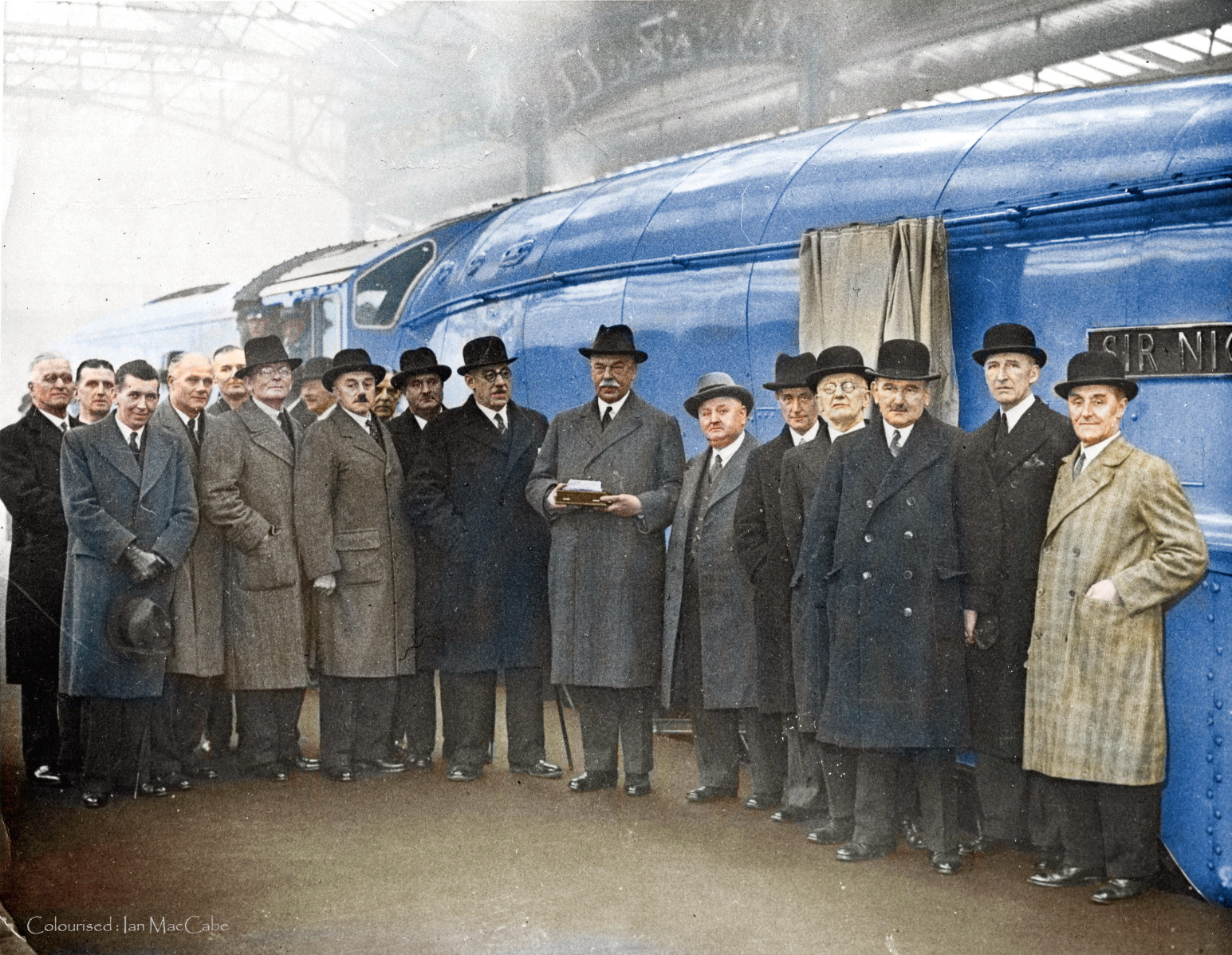
The first four locomotives included the word ‘silver’ in their names because they were intended to haul ‘The Silver Jubilee’ train. No. 2512 Silver Fox of this batch carried a stainless-steel fox near the centre of the streamline casing on each side, made by the Sheffield steelmakers Samuel Fox and Company. The next batch were named after birds, particularly those that were fast flyers, Gresley being a keen bird-watcher. Five (Nos. 4488–92) were named after British Empire countries to haul the new Anglo-Scottish ‘Coronation train’; and two (Nos. 4495/6), intended to haul ‘The West Riding Limited’, received names connected to the wool trade. No. 4498 was the hundredth Gresley Pacific to be built and was named after him. Subsequently, some other class A4s were later renamed, usually to names of directors of the LNER.
No. 4469 Sir Ralph Wedgwood was withdrawn and scrapped after being damaged beyond repair in a German bombing raid on York on 29th April 1942 during World War II. Its tender survived and was later coupled to a Thompson class A2/1. The next withdrawals were in December 1962, and rest of the class was withdrawn between 1963 and 1966. No. 60019 Bittern and No. 60024 Kingfisher were the last to be withdrawn in September 1966. Six of the class have been preserved.


Class A4 BR No. 60009 (LNER No. 4488) Union of South Africa: preserved by Society President John Cameron and after a long main line career is now preserved on his farm at Balbuthie in Fife.
Class A4 LNER No. 4489 (BR No. 60010) Dominion of Canada: preserved at the Exporail: the Canadian Railway Museum at Saint-Constant, Quebec, Canada.
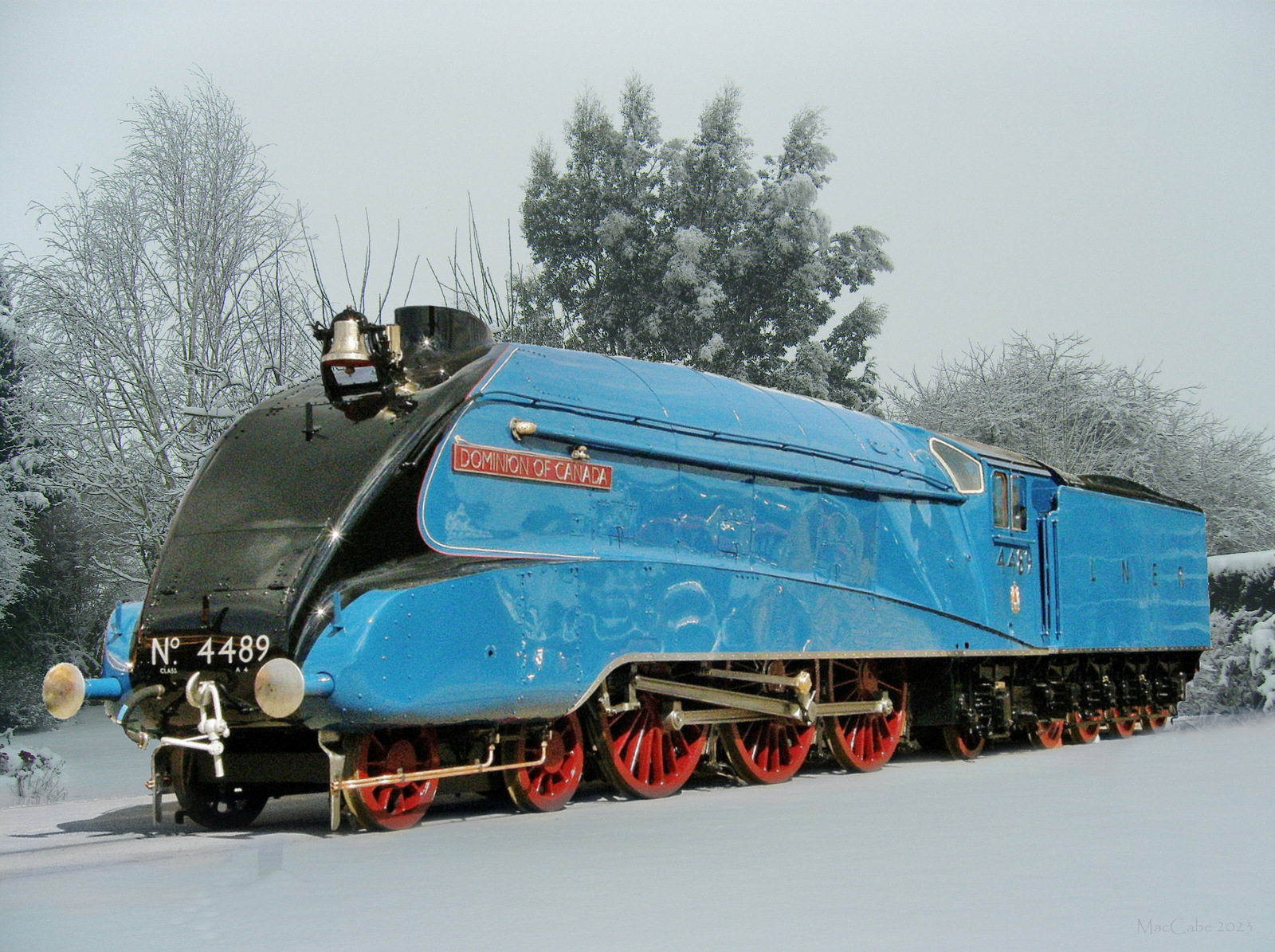
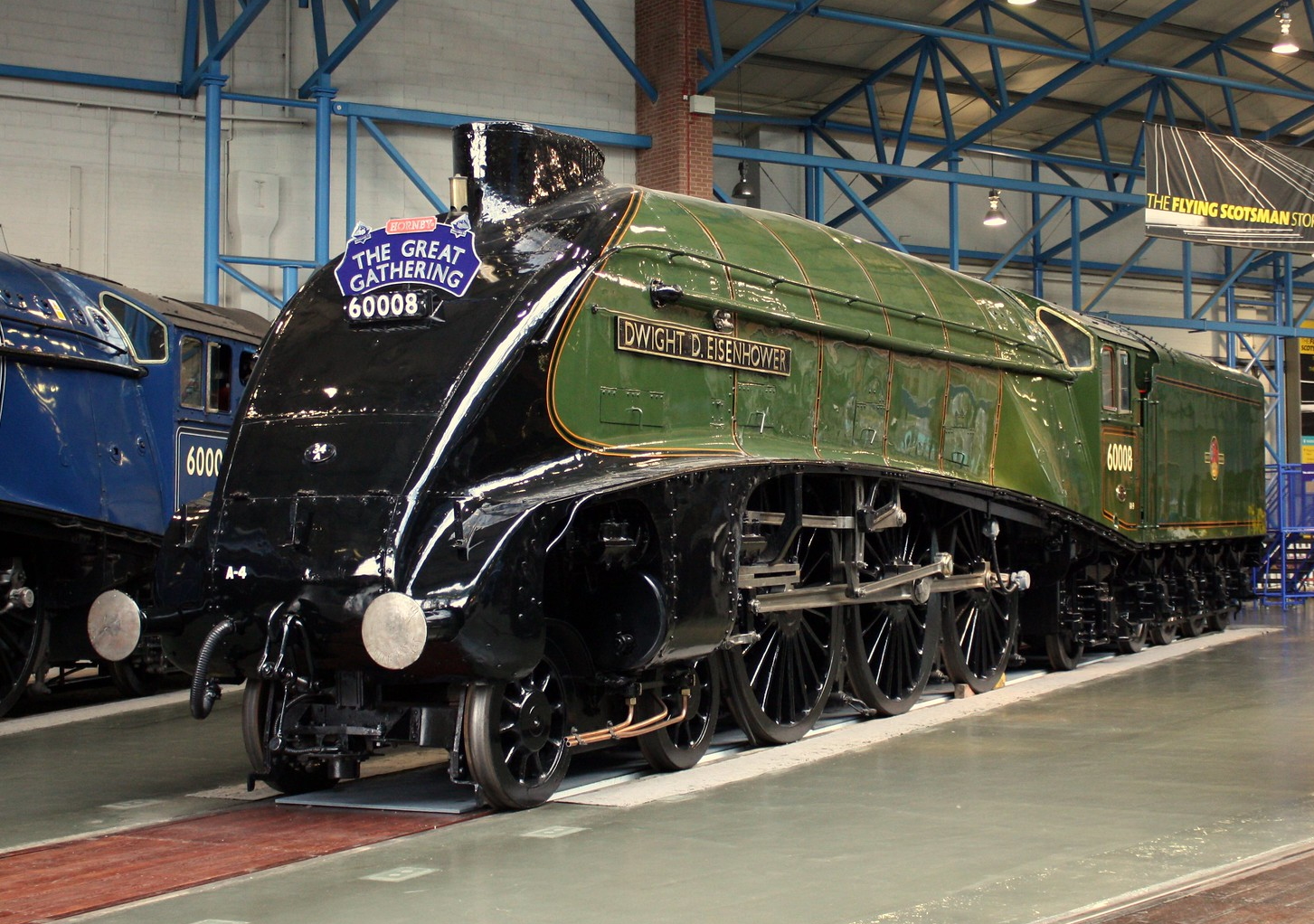
Class A4 BR No. 60008 (LNER No. 4496) Dwight D. Eisenhower (formerly Golden Shuttle): preserved at the National Railroad Museum at Green Bay, Wisconsin, USA.
Class A4 BR No. 60007 (LNER No. 4498) Sir Nigel Gresley: preserved by the Sir Nigel Gresley Locomotive Trust and currently operates on the main line.

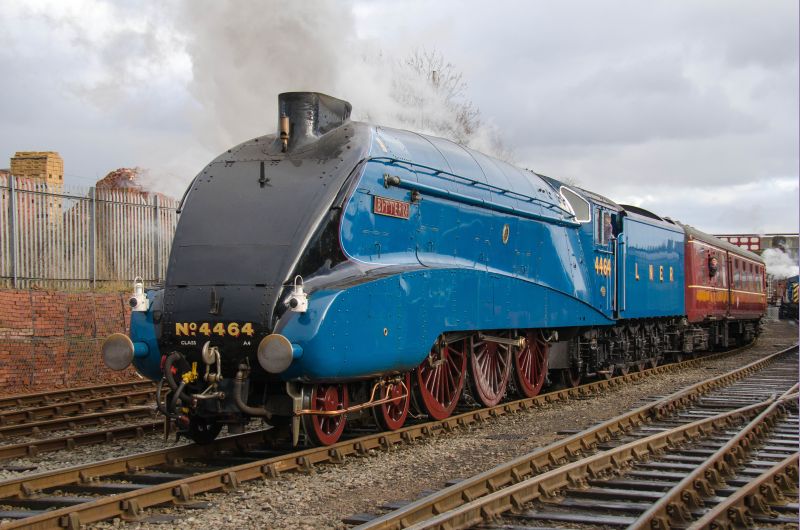
Class A4 LNER 4464 (BR No. 60019) Bittern: preserved by Geoff Drury and now owned by Jeremy Hosking and under overhaul after a period operating on the main line.
Class A4 LNER No. 4468 (BR No. 60022) Mallard: world speed record holder and part of the National Collection at the National Railway Museum in York.
